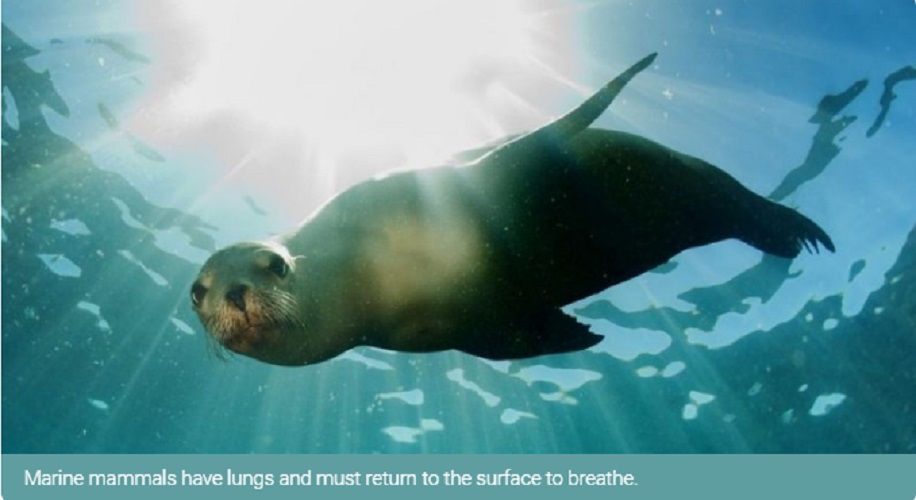Sea Animals List
We explain what are the sea animals, Sea Animals List, Types, Information, Characteristics And Examples what types exist and their characteristics. In addition, which are the most dangerous.
Sea Animals List, Types, Information, Characteristics, And Their Examples
-
What are the animals of the sea?
Sea animals or marine animals are those that are adapted to life inside the sea, on its surface or on its banks . Since our planet is in two thirds of its surface covered by water, marine life encompasses a huge and diverse number of animals, spread across the five oceans and adapted to their specific habitats .
Among the marine animals are the descendants of the oldest known organisms . In fact, as far as we know, life had its beginnings in the primitive oceans of the Precambrian geological era , billions of years ago.
However, not all life forms have the same origin, since many species of reptiles and marine mammals come from land species , which adapted back to the ocean.
The sea is also home to millions of species of microorganisms and plant species , which play an important role in the oxygenation of the planet. In addition, they support the rest of the marine food chain .
In other words, the oceans are an important source of biodiversity in the world and of constant food for various non-marine species, including the human being himself .
-
Types of sea animals

In broad strokes, we can classify marine animals according to the different regions of the aquatic mass of the oceans in which they live. We have like this:
- Animals surface , closest to the Sun and therefore accustomed to by water warmer and brighter, where algae and plankton are abundant, but also predators .
- Reef animals , which form extensive communities around coral, stones and algae forests of various types, in some of the most biodiverse places on the planet, equivalent to rainforests , but under the sea.
- Deep animals that live in colder and dark waters, at greater depth, in a more exclusive and challenging habitat.
- Abyssal animals , inhabitants of the deepest, darkest, icy and inhospitable regions of the sea, to which sunlight does not reach and which are under immense environmental pressures.
-
Characteristics of sea animals

Sea animals are very diverse in nature , as they are distributed throughout various underwater environments and integrated into highly specific trophic chains.
Thus, it is possible to find representatives of practically all types: microorganisms or microscopic animals; invertebrates such as sponges, worms, jellyfish and mollusks; arthropods ; echinoderms; a large variety of bony and cartilaginous fish; aquatic life mammals; reptiles and amphibians , and on the surface, crossing land, air and water, different species of birds.
However, among such diversity of life forms, we can distinguish large groups according to their breathing . Some breathe through underwater mechanisms , such as gills. On the other hand, others still have lungs to breathe the air , being forced to ascend to the surface every so often to breathe.
Similarly, marine animals differ from terrestrial animals in that their limbs are adapted to displacement within the aquatic fluid , so the presence of legs is replaced by fins, even in those animals that come evolutionarily from a terrestrial habitat.
-
The most dangerous marine animals

In general, marine life does not represent a threat to the human being , although unfortunate encounters exist and occur from time to time. The human being is not part of any trophic chain of the ocean, so no animal contemplates it as a potential food, except by mistake.
That does not mean that there are no animals with the potential to harm us, such as:
- The shark . Contrary to what movies make us believe, cases of shark attacks are extremely scarce and accidental, although possible. Of the bulk of the shark species, only a few are capable of hurting a swimmer or a diver, and among them are the tiger or dye shark, the white shark and eventually some blue sharks.
- Frogfish . These species of reef fish have different names, such as scorpion fish, toad fish, salamander fish, but they have in common their camouflage that makes them look like a stone. Together with other species endowed with bright and colorful coloration, these animals have poisonous glands capable of inducing catastrophic failures in the body, provided that we step on them by mistake or eat them without care.
- Jellyfish . There is a huge diversity of jellyfish of different sizes, from microscopic to several meters in length, such as the famous Portuguese Warship ( Physalia physalis ). The latter is capable of killing a human being if he were entangled in his long and poisonous tentacles, which would induce him to paralysis and death by drowning. This would, of course, without the jellyfish propose it at all.
-
List of sea animals

A necessarily partial listing of marine animals would include the following:
- White shark ( Carcharodon carcharias )
- Tiger shark ( Galeocerdo cuvier )
- Hammerhead shark ( Sphyrna mokarran )
- Sardine ( Sardine pichardus )
- Bluefin tuna ( Thunnus alalunga )
- Marine anemone ( Actinaria sp. )
- Pillar Coral ( Dendrogyra cylindricus )
- Hermit Crab ( Birgus latro )
- Marine lobster ( Palinurus elephas )
- Stonefish ( Synanceia horrida )
- Whale shark ( Rhincodon typus )
- Blue Whale ( Balaenoptera musculus )
- Orca whale ( Orcinus orca )
- Common seal ( Phoca vitulina )
- Sea lion ( Otaria flavescens )
- Common octopus ( Octopus vulgaris )
- Sea Angelfish ( Chaetodontoplus septentrionalis )
- Mantarraya ( Manta birostris )
- Brunette ( Gymnothorax javanicus )
- Green mussel ( Perna viridis )
- Portuguese warship ( Physalia physalis )
- Barracuda ( Sphyraena barracuda )
- Marine crocodile ( Crocodylus porosus )
- Common Dolphin ( Delphinus delphis )
- Spider Crab ( Macrocheira kaempferi )
- Marine iguana ( Amblyrhynchus cristatus )
- Imperial Cormorant ( Leucocarbo atriceps )
- Common Pelican ( Pelecanus occidentalis )
- Seagull ( Larus argentatus )
- Grouper fish ( Epinephelus itajara )
- Hawksbill turtle ( Eretmochelys imbricata )
- Abyssal pelican fish ( Eurypharynx pelecanoides )




